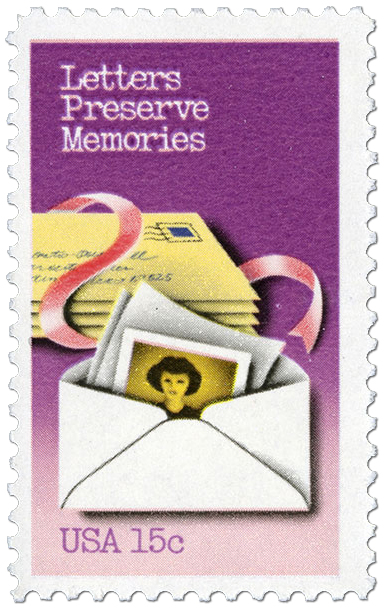
As World War II drew to a close, Americans prepared to welcome their returning heroes. Fathers and sons, husbands and fiancées, women who had worked as nurses overseas—all the survivors began to come home. The thick stream of correspondence that had once swelled the international and military mail service slowed to a trickle as men and women so long separated from their loved ones settled into life at home. While letter writing was still an important means of communication for Americans across the country, the decades following the Second World War were characterized by the widespread adoption of the telephone into American homes. What had been a method of communication only the wealthy could afford to own during the Depression became, following the war, a staple piece of equipment in most American households. Its simple convenience was the telephone’s main attraction—now that most people could afford the cost of a landline, it was possible to be connected instantaneously anywhere across the country.
Throughout the second half of the twentieth century the status of the letter in American communication sharply declined. As generations who were raised writing letters gave way to baby boomers who had never known a household without a telephone, letters were more and more often deemed unnecessary. Personal news or plans could now be shared in a fifteen-minute telephone conversation, and business phone calls, as well as the later innovation of the conference call, diminished the need to do business by letter. In the wake of the Internet explosion in the late twentieth century, e-mail quickly came to dominate American communications. Combining the speed of a telephone call with the clarity of the written word, e-mail is fast becoming the preferred method of information exchange among even the most traditional institutions. A recent study showed that sixty-six percent of Americans send e-mail every day, and the average number of e-mails received among that population is twenty-two. [To read more about methods of communication that have threatened letter writing, click here.]
Despite the omnipresence of the telephone and e-mail in modern America, however, certain facets of American life have continued to engender letter writing throughout the twentieth century and into the twenty-first. Even in an age of instantaneous connection around the world, Americans young and old continue to discover the power of letters to bring them comfort, love and hope. Letters, as physical objects, come directly from the hands of the sender, thus creating a bond between sender and receiver that even a phone call cannot forge. The handwriting is familiar, the stationery feels solid and substantial—even the smell of a letter might have meaning for a person far away from loved ones.
This is one reason why soldiers, especially, continue to request letters while they are stationed overseas or on bases in the states. Twentieth and twenty-first century soldiers write and receive far more personal letters than the national average, which hovers at around 2% of letters sent through the postal service. While e-mail and the telephone more or less dominate American communication at home, letters are still appreciated by our country’s troops overseas. A number of services have arisen to provide soldiers who otherwise would receive no mail with correspondents who are eager to support the troops by writing encouraging letters. These services, which are generally available online, match soldiers with American citizens who want to write letters, and instruct the correspondents about what is permissible to send through the mail to an occupied zone. Sometimes the services are so popular among the troops that they have to wait to receive a correspondent, evidence of the importance letter writing still holds for Americans who are far away from home.
Another area of modern American life where letters are still written on a regular basis reflects one of a U.S. citizen’s basic rights—the right to petition the government. Letter writing campaigns are invoked for every election, every issue, ever instance where the letter writers think that someone in a position of authority should take action regarding a particular situation. The quasi-political arena of the letter writing campaign has wholeheartedly embraced the technological advances of e-mail, but the e-mails that are sent to senators, governors, county councilmen and the like are still in letter format. Participants in those letter writing campaigns are aware of the power of the letter to communicate the will of the people, something politicians claim to care very much about. These participants continue to send their letters, physical and electronic, hoping that amidst the din the voice embodied in the letters may be heard.
There are also many indications in modern society that letter writing’s traditional hold over business transactions has not yet relaxed its grip. Though it is now possible to buy and sell a car online, to bank online, and to pay for a college education online, there are still procedures involved in each of these undertakings that demand written confirmation. This fact suggests that one of letter writing’s most valuable traits is its permanence, the physical proof in our hands that what we say we have done has actually been done. America’s dependence on the written word undoubtedly stems from the days when letters were the only way to communicate with people over any kind of distance. Although communications technology is continuously changing around us, the informal nature of e-mail and the ephemeral quality of an instant message conversation make very poor ways to ascertain that both parties in any agreement know and accept what has been suggested. For this reason, all manner of business transactions are still completed by letter: mortgages, leases, loans, college acceptances. Although more and more paperwork is now being completed electronically, even down to the “e-signature” which allows you to type your name and some security information in order to duplicate a legally binding signature, most important agreements, or situations where money is changing hands, are followed up with a hard copy of a letter repeating what has been agreed upon.
